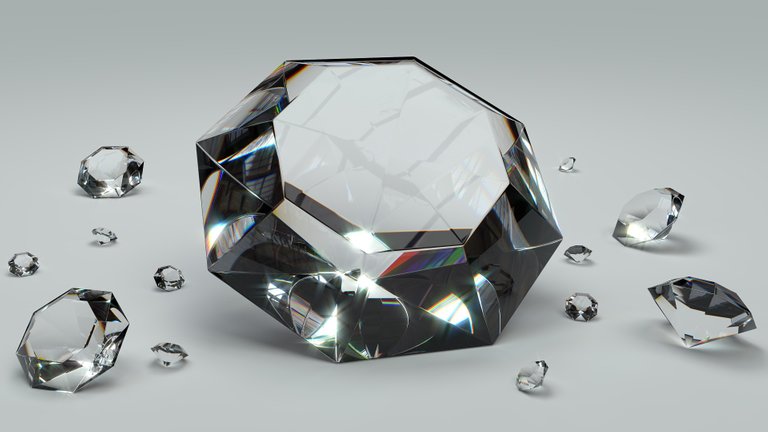Artificial Hexagonal Diamonds Are Harder Than Natural Diamonds
Normal diamonds with a cubic structure are very durable and harder. But the gigantic forces that take place when a meteorite hits can create hexagonal diamonds that are even more durable. And now, we can make our own.

Image by Colin Behrens from Pixabay
- Be also sure to check out my other posts and follow me @kralizec and subscribe to my Youtube channel at Kralizec Gaming Youtube Channel
Diamonds are forever. Why? Because this mineral that crystallizes into a cubic structure is one of the hardest and most durable materials we know of here on Earth. But now, it’s getting some competition from artificially created materials as an American team confirmed that diamonds with a hexagonal structure are even more durable than conventional diamonds.
We do know of natural hexagonal diamonds. They can be found in some places where space decided to attack the Earth with meteors. But, they are more easily made by material scientists in laboratories. Sadly, until now they were either too small or existed for too short a time to analyze in detail. But this has finally changed thanks to a team from the Institute for Shock Physics at the Washington State University led by Travis Volz. They managed to create hexagonal diamonds that were large enough that we were capable to analyze their stiffness with sound waves.
As Yogendra Gupta – the person who leads the institute and a co-author of the study – says: diamond is a very unique material. It is hard and durable but it also has exceptional optic qualities and very high heat conductivity. For some time now, material scientists are trying to create a material that would be even harder and more durable than diamonds and could be used in industry. We already knew that hexagonal diamonds should be more durable but it was never proven in a laboratory. Volz’s team created hexagonal diamonds in experiments with shock compression and for the first time ever confirmed that they truly are harder and more durable than cubic diamonds.
Experiments clearly showed that sound waves move faster in hexagonal diamonds move faster than in classical cubic diamonds. And we know that the speed of sound moving through a material is growing with the stiffness of the material. The amazing thing is, these measurements took place in just a few nanoseconds before the insane forces created by the collisions destroyed the hexagonal diamonds again.
To give you a bit of an explanation, the stiffness of a material is its ability to withstand deformations caused by outside forces. Hardness is its ability to resist being scratched or similar pressures against its surface. Generally, stiff materials are hard as well. While Volz’s team was not able to directly measure the hardness of hexagonal diamonds they are deducing that it will be extremely high based on its stiffness.
Now we just need to get to a point where we can produce high quantities of hexagonal diamonds they should find a lot of use in many industries.
Sources:
- If you like the content I’m producing about science maybe you will like the content I produce about gaming as well! Be sure to check out my other posts!